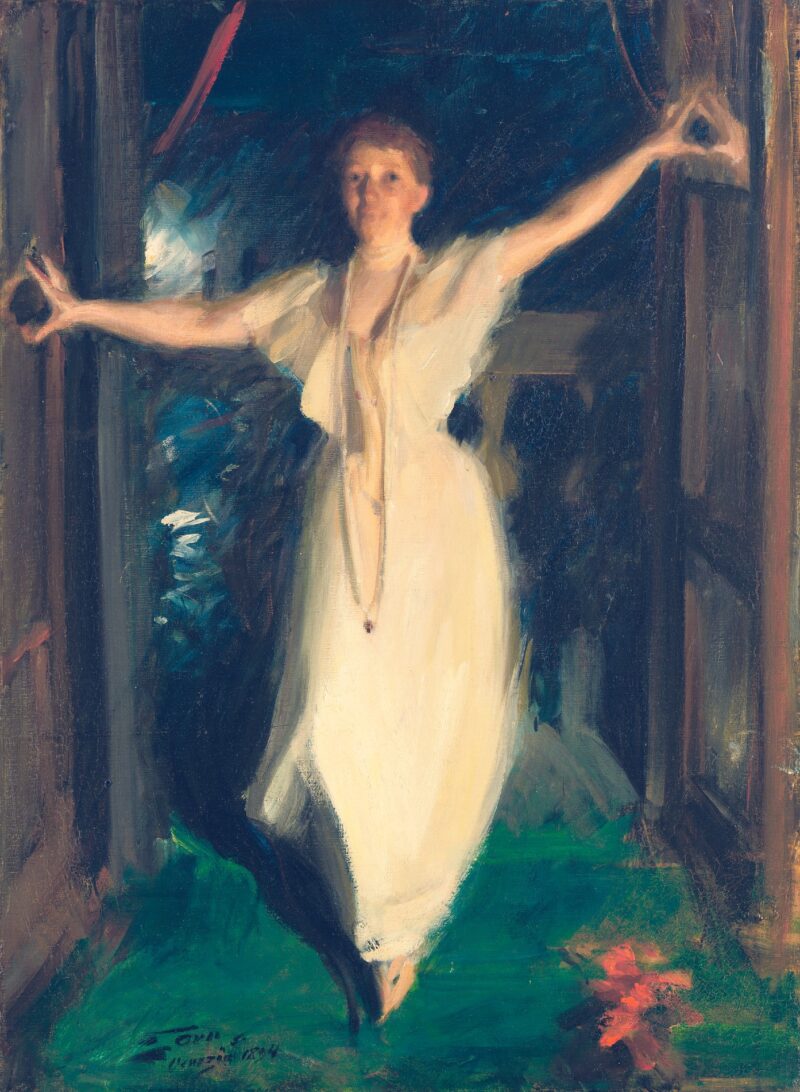“Come out—all of you! This is too beautiful to miss!”– Isabella Stewart Gardner
Thursday night after hours will begin after seven; after work and chores and worries, the walk, dinner – splattered on the floor, bemoaned and cleaned. Chores again. Bath, cuddles, a little jazz, a few stories and much kissing and negotiating before bedtime and then, finally…
At seven thirty, across the city, another life. It begins in a glass-covered garden courtyard bathed in gold light. A Venetian palace, the first of its kind ever built in America. Once upon a time, art museum.
Once upon a time, there was a woman named Isabella Stewart Gardener, who lived “at a rate and intensity, and with a reality that makes other lives seem pale, thin and shadowy.”
She was born in New York, studied in Paris, travelled and read avidly, danced in gowns from Worth and jewels from Boucheron. “I never caught a cold in a ball dress.’’
She loved life and art, and filled the former with more than 7,500 paintings, sculptures, medieval stained glass windows, furniture, silver, tapestries. Painted leather wallpaper. 1,500 rare books. Letters. China plates and gilded champagne glasses and chandeliers. Over 7,000 archival objects from ancient Rome to Renaissance Italy, Asia, the Islamic World, 19th century Europe, America…
Once upon a Thursday night: red velvet drapes and Rembrandt, Giotto, and Titian. Oak ceilings, triple arcade balconies, Singer Sargent, a coat of armour. Whistler, Monet, Degas, Matisse, Vermeer. Japanese orchids and silks and Turkish tiles and The Omnibus and…
Isabella was described as “the idol of the men and envy of the women,’’ a “fairy in a machine shop.” But her life was not all a fairy tale; none are.
They are what one makes of them. My hands smell of baby lotion. She lost her only son, Jackie, before he was two. She had no other children. She adopted her husband’s three orphaned nephews, opened her home to artists, writers, musicians, because art and beauty, she believed, brought solace to the world,
and should be accessible:
“I decided that the greatest need in our country was art… We were a very young country and had very few opportunities of seeing beautiful things […] So, I determined to make it my life’s work.”
She dreamt of a house “filled with beautiful pictures and objects of art, for people to come and enjoy.” When her husband died, that dream became a goal. Four years later, she opened a four-story museum with the lifetime of art they had built. She kept an apartment on the top floor. The rest, she shared with the public, and when she died, her wealth with organizations that protect animals and children.
“We are all playing a losing game, you play it better than anyone else in the world.’’
– Bernard Berenson, in a letter to Isabella Stewart Gardener
There is no life before and after hours. Only life. To love it as one loves art, and live it so, generously and with abandon, in spite of all things. In spite of sore muscles and sorrows big and small, worries, fears, alphabet soup – of which some, I am sure, is still on the wall,
in a kitchen across the city, on a Thursday night, five to nine.
Five more minutes. On the second floor, in a corner of the Short Gallery – easy to walk past; she placed it there herself – a portrait of Isabella in Venice, bursting into the drawing room of the palazzo, in white light, in a white dress:
“According to Jack Gardner’s diary, […] his wife went out on the balcony to see a display of fireworks. Coming back into the room filled with guests, she threw open the glass doors and said, ‘Come out—all of you! This is too beautiful to miss!’”
